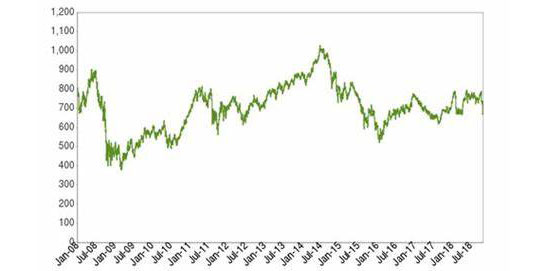Feb 12, 2024 By Susan Kelly

What is Reverse Merger?
A reverse merger occurs when a private firm acquires a public company by exchanging most of its shares with the public company, effectively making the private company a subsidiary of the public company. Reverse Mergers are also typically referred to as reverse initially public offerings (IPOs) or reverse takeovers (RTOs).
What to know about Reverse Mergers?
Reverse mergers are typically accomplished through a simpler, faster, and less expensive process than a traditional IPO. An IPO is when a private company hires an investment bank to underwrite and issue shares in a newly formed public company.
The bank assists in establishing interest in the shares, providing advice on acceptable initial pricing, filing regulatory paperwork, and assisting authorities in reviewing the deal. The traditional IPO must combine the process of going public with the function of raising capital. Reverse mergers separate these two functions, making them an appealing strategic choice for corporate executives and investors.
In a reverse merger, private firm investors purchase a majority of the stock of a public shell company, which is subsequently merged with the acquiring entity. Investment banks and financial institutions commonly use shell companies to complete these transactions.
The Securities and Exchange Commission (SEC) can register these simple shell businesses in advance (before the transaction), making the registration process reasonably quick and inexpensive. To complete the transaction, the private firm trades shares with the public shell in exchange for stock in the shell, effectively turning the acquirer into a public corporation.
In a reverse merger, private firm investors purchase a majority of the stock of a public shell company, which is subsequently merged with the acquiring entity. Investment banks and financial institutions commonly use shell companies to complete these transactions. The Securities and Exchange Commission (SEC) can register these simple shell businesses in advance (before the transaction), making the registration process reasonably quick and inexpensive. To complete the transaction, the private firm trades shares with the public shell in exchange for stock in the shell, effectively turning the acquirer into a public corporation.

Advantages of Reverse Mergers
Simplified Process
Reverse mergers allow a private firm to go public without raising funds, making the process easier. While traditional IPOs can take months (or even a year) to execute, reverse mergers can be completed in as little as a few weeks (sometimes in as little as 30 days). This saves time and energy for management, allowing them to devote more time to running the business.
Risk minimization
Going through the traditional IPO procedure does not ensure that the company will eventually go public. A standard IPO might take hundreds of hours for managers to organize. However, if stock market conditions become unfavorable to the anticipated offering, the deal may be terminated, wasting time. This danger is reduced by pursuing a reverse merger.
Less dependence on the market
As previously stated, a standard IPO combines the responsibilities of going public and capital-raising functions. The reverse merger relies less on market circumstances because it is primarily a tool for converting a private firm into a public corporation (because the company is not proposing raising capital). Market circumstances have minimal influence on the offering because a reverse merger serves primarily as a conversion mechanism. Instead, the procedure is being followed to reap the benefits of being a government organization.
Benefits of a public company
Going public is frequently attractive to private companies with revenues ranging from $100 million to several hundred million dollars. The company's securities are then traded on an exchange, resulting in increased liquidity. The original investors get the ability to liquidate their holdings, allowing them to exit without having to wait for the company to purchase back their stock.
Management now can issue additional stock through secondary offerings, giving the company more access to capital markets. If stockholders have warrants, which give them the right to buy more stock at a predetermined price, exercising these options brings more money into the company.
Mergers and acquisitions are among the more strategic growth alternatives available to management. Compared to private companies, public companies frequently trade at higher multiples. Significantly improved liquidity indicates that the company's stock is available to the general public and institutional investors (as well as major operating companies), which can influence its price.
Disadvantages of Reverse Merger
Due diligence required
Managers should rigorously vet the public shell company's investors. What are their reasons for joining forces? Have they investigated to ensure that the shell is free of contamination? Is the public shell hounded by pending liabilities (such as those arising from litigation) or other "deal warts"? If this is the case, the public shell's shareholders may be looking for a new owner to take over these issues. As a result, proper due diligence should be carried out, and open disclosure should be expected (from both parties).
No demand for shares post-merger
Will a private company's investors get enough liquidity once it completes a reverse merger? Smaller businesses might not be ready to go public. There could be a lack of financial and operational scale. As a result, smaller companies may be overlooked by Wall Street analysts. The initial investors may find little demand for their shares after the reverse merger is completed. For a firm's shares to appeal to potential investors, the company must be appealing operationally and financially.
Stocks with a high risk of being dumped will be sold
If the public shell's investors sell a significant number of their shares soon after the merger, the stock price will suffer materially and negatively. Clauses requiring necessary holding periods might be put into a merger agreement to minimize or eliminate the danger of the stock being dumped.
The burden of Regulatory and Compliance Requirements
When a private firm goes public, one of the most significant disadvantages is that management is generally unfamiliar with the additional regulatory and compliance responsibilities of being a publicly-traded company. These responsibilities (and associated time and financial expenses) can be substantial. The first effort to comply with new requirements might result in a stagnant and failing company if managers devote far more time to administrative problems than running the business.
The Bottom Line
Reverse mergers offer private companies an ideal way to avoid all the procedures typically associated with the IPO process. Getting a company listed on a stock exchange and becoming public is usually a cost-effective method for them.
-

Reverse Mergers Advantages and Disadvantages
Feb 12, 2024
-

Essentials of Bird Dogging in Real Estate for Beginners and Field Pros
Dec 22, 2023
-

Detailed Guide to Homeownership for Single Parents
Jan 26, 2024
-

What Exactly Is a Working Capital Loan?
Dec 16, 2023
-

Analyzing the Business Model and Revenue to Understand How Does Fortnite Makes Money
Dec 06, 2023
-

Find Out: What Are the Minimum Number of Shares You Can Buy?
Nov 06, 2023
-

Gross Domestic Product
Oct 04, 2023
-

How To Use Cash-Out Refinance Calculator
Oct 28, 2023



